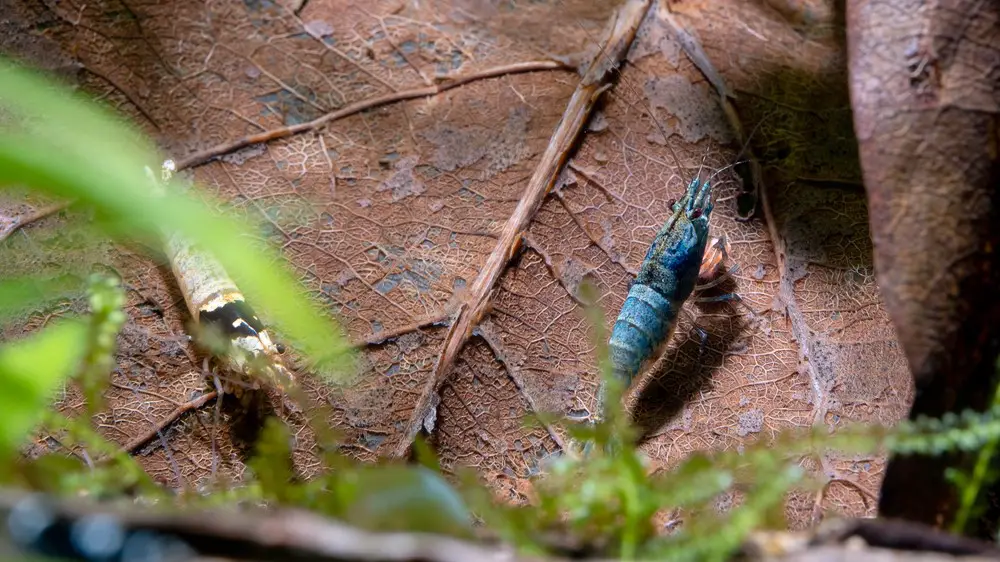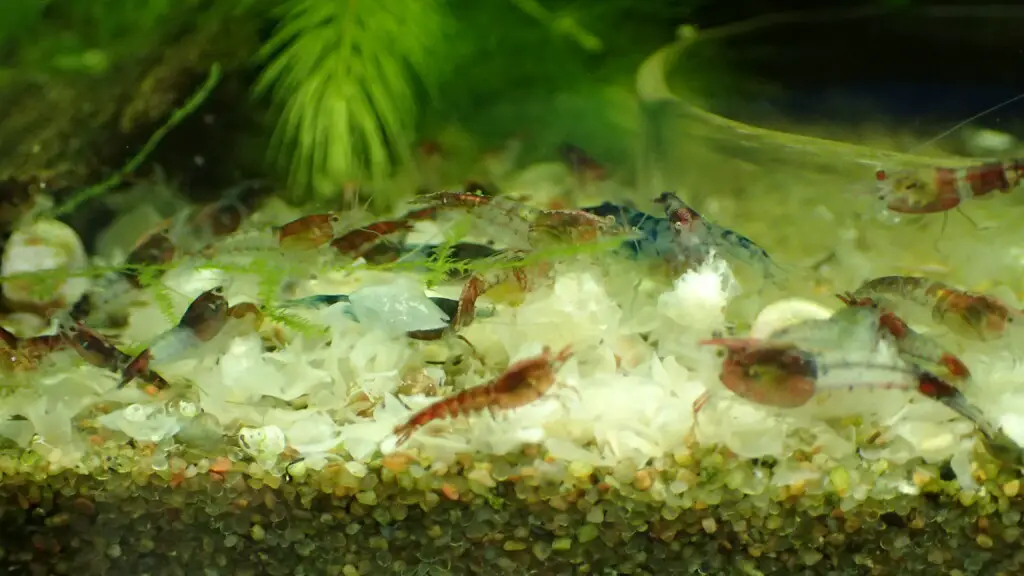Ever faced the dilemma of leaving your beloved shrimp behind while you jet off on a well-deserved vacation? Imagine packing your bags, excitement bubbling, only to glance at your shrimp tank and feel a pang of worry. What will happen to your aquatic friends while you’re away?
The best approach to caring for your shrimp while on holiday is to feed them before you leave, add a few brown leaves of your choice, and take into account factors like evaporation. Avoid relying on others to feed them or using holiday blocks meant for fish.
Embarking on a holiday adventure should be a joyous occasion, but for us shrimp keepers, it often comes with unique challenges.
I’ve faced the anxiety of leaving my shrimp unattended, the horror of discovering overfeeding by well-meaning friends, and the confusion of navigating various feeding solutions.
Over the years, I’ve learned the delicate art of preparing my shrimp tank for my absence, balancing nourishment and water quality.
In this post, I’ll share my tried-and-true methods, sprinkled with a pinch of wisdom, to ensure your shrimp thrive while you’re away. So grab your suitcase and your favorite shrimp food, and let’s embark on this journey together!

How do I prepare my shrimp tank before going on vacation?
Preparing your shrimp tank before going on vacation is a bit like packing your suitcase – it requires careful planning, attention to detail, and a touch of finesse. Unlike tossing in a few extra pairs of socks “just in case,” preparing your shrimp tank is about creating a stable environment that will sustain your shrimp while you’re away.
Start by feeding your shrimp their standard food a day before you leave, ensuring they have enough sustenance. Add a few brown leaves of your choice, such as Indian almond leaves , to the tank. These leaves will decay over time, forming biofilm that your shrimp can feed on in your absence. It’s wise to soak the leaves for a few days beforehand to remove excess tannins, as too much can affect water quality.
, to the tank. These leaves will decay over time, forming biofilm that your shrimp can feed on in your absence. It’s wise to soak the leaves for a few days beforehand to remove excess tannins, as too much can affect water quality.
Speaking of water quality, make sure to perform a water change and check the water parameters to ensure everything is in optimal condition before you go.
and check the water parameters to ensure everything is in optimal condition before you go.
If you are away for an extended period, consider covering the tank to reduce evaporation, and remove any heaters if they’re not needed.
Lastly, resist overfeeding or relying on well-meaning friends or holiday blocks meant for fish. These can lead to overfeeding and potentially harm your shrimp.
Think of preparing your shrimp tank as setting up a mini vacation for your shrimp. With the right preparation, they’ll be dancing the days away, eagerly awaiting your return. Now, where did you put that sunscreen?
What types of leaves can I use to feed my shrimp while I’m away?
Ah, the leafy buffet for our shrimp friends! When it comes to feeding shrimp with leaves, it’s like choosing the perfect vacation destination – you want something exotic but not too wild.
Leaves are a fantastic way to provide sustenance for your shrimp while you’re away, as they decay and form biofilm, a delicious treat for your aquatic pals.
Indian almond leaves are the all-inclusive resorts of the shrimp world. They’re popular, reliable, and shrimp seem to love them. Soaking them for a few days helps to get the most of the tannins out, ensuring a balanced water quality.
But don’t stop there; the world of leaves is as diverse as a tropical beach’s cocktail menu. You can also consider options like mulberry leaves, guava leaves, or even oak leaves. Each of these leaves brings its unique flavor to the shrimp tank, providing different nutrients and benefits.
Remember, though, not all leaves are created equal. Avoid any leaves that might have been exposed to pesticides or other chemicals, as these can be harmful to your shrimp. It’s like choosing a beachside hotel – you want the view without the noise of construction next door.
How can I prevent overfeeding my shrimp during my absence?
Preventing overfeeding your shrimp during your absence is like setting the perfect out-of-office reply: it requires a clear understanding of what’s needed and what’s not. Overfeeding can be a common concern for shrimp keepers heading out on vacation, but with a little foresight, you can ensure your shrimp enjoy a balanced diet while you’re away.
Start by feeding your shrimp their standard food before you leave, and resist the urge to add extra “just in case.” It’s like packing an extra suitcase of clothes for a weekend getaway – unnecessary and potentially problematic.
Adding a few brown leaves, such as Indian almond leaves, can be a great way to provide a slow-release food source. As the leaves decay, they form biofilm, which your shrimp can graze on at their leisure. It’s the shrimp equivalent of a buffet that never closes, without the risk of overindulgence.
Avoid relying on well-meaning friends or family to feed your shrimp, as they may not understand the delicate balance required. It’s like asking someone who’s never driven a stick shift to take your sports car for a spin – the intentions are good, but the results can be disastrous.
Also, steer clear of holiday blocks meant for fish. These can lead to overfeeding and are not suitable for shrimp. It’s like ordering a five-course meal when a light salad will do.
Understanding your shrimp’s needs and providing a controlled food source, you can prevent overfeeding and return to a tank full of happy, healthy shrimp. It’s the peace of mind you need to fully enjoy your vacation, knowing that your shrimp are dining in style without overdoing it back home.

What precautions should I take to maintain water quality in my shrimp tank while on holiday?
Maintaining water quality in your shrimp tank while on holiday is akin to ensuring your house is locked and secure before leaving for a trip. It’s about taking thoughtful precautions that allow you to relax and enjoy your time away, knowing that everything back home is in good order.
Before you jet off, perform a water change to ensure that the tank is in optimal condition. Think of it as tidying up before a house sitter arrives – you want everything to be just right. Check the water parameters, such as pH, ammonia, nitrite, and nitrate levels, to make sure they’re within the acceptable range for your shrimp.
Consider the evaporation rate in your tank, especially if you’ll be away for an extended period. Covering the tank can reduce evaporation, keeping the water level stable. It’s like closing the windows before a rainstorm – a simple step that can prevent a big mess.
If you’ve added leaves to feed your shrimp, make sure to soak them beforehand to remove excess tannins, as too much can affect water quality. It’s a bit like marinating a steak – you want the flavor, but not too much.
Remove any unnecessary equipment, such as heaters, if they’re not needed during your absence. Think of it as turning off the lights before leaving the house – it’s a small step that can make a big difference.
before leaving the house – it’s a small step that can make a big difference.

Slow-release Feast: Snowflake Shrimp Food for Holidays
Snowflake shrimp food is a shrimp keeper’s best ally when holiday plans arise.
Derived from organic soybean hulls, this nutrition-packed food source is not only a favourite among shrimplets but also conveniently slow to break down.
Why is this important?
It means that, unlike other food types, snowflake food stays intact for a week or even more, providing a continuous feast for your shrimp.
As much as we love to spoil our shrimpfam, remember not to overdo it with the snowflake food.
A pinch per 10 shrimp should suffice. This will help avoid water quality issues that can arise from overfeeding.
Even though snowflake food breaks down slowly, it’s better to err on the side of caution and not risk the health of your shrimpfam.
So, shrimp keepers, you can now plan your vacation without any worries about your shrimpfam’s dining needs.
Remember, our little friends love the snowflake food, but moderation is key.
Conclusion: Preparing Your Shrimp Tank for Vacation
In summary, preparing your shrimp tank for a vacation is a thoughtful process that requires attention to feeding, water quality, and overall tank maintenance. By understanding your shrimp’s needs and taking the right precautions, you can enjoy your holiday knowing that your aquatic friends are well cared for.
From choosing the right leaves to feed your shrimp to maintaining water quality and preventing overfeeding, every step ensures a happy and healthy environment for your shrimp.
If you need any assistance or have questions about preparing your shrimp tank for vacation, please don’t hesitate to reach out. If you can’t find me here, check out aquarium shrimp keeping on Facebook.
Have a nice vacation, shrimpfam!
FAQ: Caring for Shrimp While on Vacation
Q. How long can shrimp go without food?
A. Shrimp can typically go without food for a week or two, relying on biofilm and algae in the tank. However, for longer absences, providing decaying leaves can offer a slow-release food source.
Q. What do you feed shrimp on vacation?
A. While on vacation, you can feed shrimp with decaying leaves like Indian almond leaves, mulberry leaves, or guava leaves. These leaves break down slowly, providing a continuous food source.
Q. How do you feed shrimp while away?
A. Before leaving, feed your shrimp their standard food and add a few brown leaves to the tank. The leaves will decay and form biofilm, which the shrimp can graze on while you’re away.
Q. Do you need a feeding dish for shrimp?
A. A feeding dish is not necessary while on vacation, as the leaves will naturally decay in the tank. However, feeding dishes can be useful for daily feeding to contain food and reduce waste.
Q. Can shrimp survive on fish food ?
?
A. Shrimp can eat fish food in small quantities, but it’s not ideal for their diet, especially during an extended absence. Providing leaves ensures a more suitable and balanced diet.
